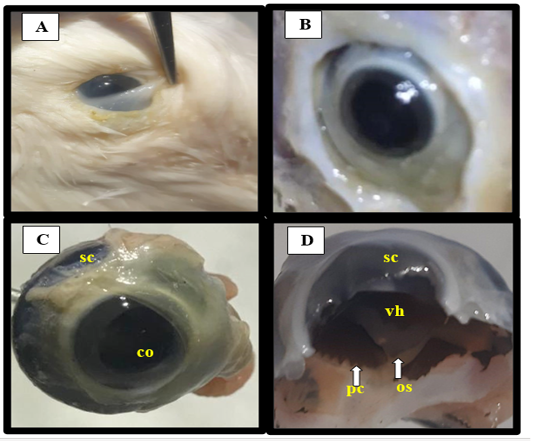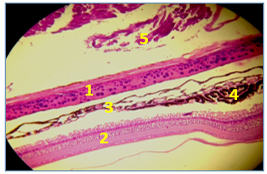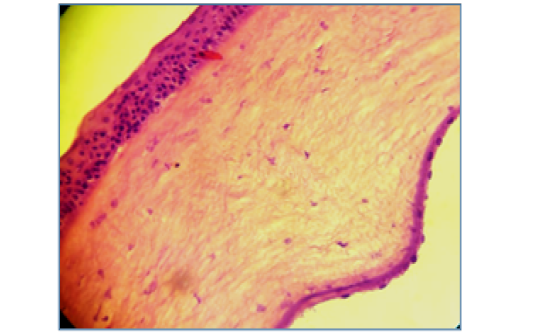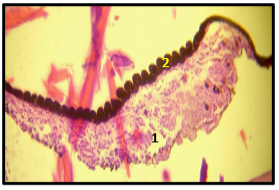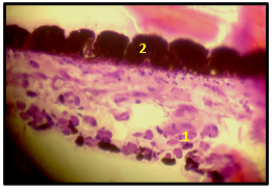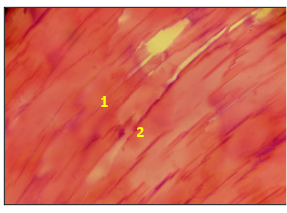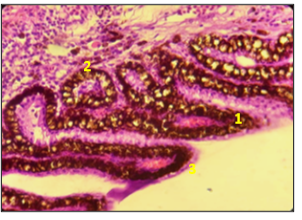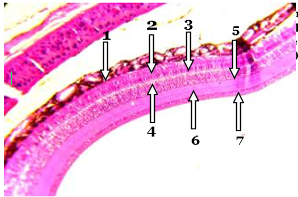Anatomical Descriptions and Histological Observation Study of the Eyes in Domesticus Duck (Anas platyrhnchos)
Anatomical Descriptions and Histological Observation Study of the Eyes in Domesticus Duck (Anas platyrhnchos)
Mohammed A. Ali1*, Firas A. Alhasson1, Thaer A. Mohsin2
Anatomical structure of the eye in duck show Sclera (sc), Cornea (co), Vitreous humour (vt), Ora Serrata (os), and posterior chamber (pc).
Micrographic of eye in duck shows: 1- Sclera, 2-Retina, 3- Choroid, 4- Cilary process and 5-Muscles. (H&E 200X).
Micrographic of eye in duck shows section through the cornea: 1- Corneal epithelium Stratified squamous epithelium non- keratinized,2- Bowman membrane, 3- Stroma (also called substantia properia), 4- Descemet’s membrane and 5-Corneal endothelium (H&E 400X)
Micrographic of eye in duck shows cillary body: 1-Ciliary muscle and 2-Ciliary epithelium(H&E stain X200).
Micrographic of eye in duck shows cillary body:1- Ciliary muscle and 2-pigmented epithelium (H&E stain X400).
Micrographic of eye in duck shows lens:1- Simple cuboidal lens epithelium and 2-. Differentiating nucleated lens fibers (H&E stain 400X)
Micrographic of eye in duck showscillary body:1- Cillary process. 2-Ciliary muscle and 3- Ciliaryepithelium (H&E stain 400 X)
Micrographic of eye in duck shows:1-Retinal pigment epithelium, 2-Photoreceptors and glial cells (Rod and cone cells), 3- Outer nuclear layer, 4-Outer plexiform layer, 5-Inner nuclear layer, 6-Inner plexiform layer, and 7-Ganglion cell layer (H&E stain 400X).





